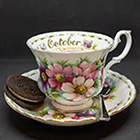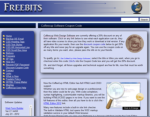Using Mapping Tool for links
You can always use the mapping tool to create links to a converted text.Just highligth the word to turn it into a link, or hotspot as it is also known.
MichaelA
You can always use the mapping tool to create links to a converted text.Just highligth the word to turn it into a link, or hotspot as it is also known.
MichaelA
Another way of fixing line heights in Mozilla
OneComputerTeck@yahoo.com wrote:
Visual Site Designer!!! this will fix the line problem with netscape and mozilla browser and others i believe, insert this code in the html window, when inserting text works like a charm!!!! good luck, can you please guys email me if this code works for you guys. Repairs777@aol.com or www.ComputerRepairSolutions.net
code below:
<div align="justify">
<font style="font-size:13px" color="#000000" face="Tahoma">
TEXT HERE!!!!!!
TEXT HERE!!!!!!
TEXT HERE!!!!!!
TEXT HERE!!!!!!
TEXT HERE!!!!!!
<br><br>
TEXT HERE!!!!!!
TEXT HERE!!!!!!
TEXT HERE!!!!!!
TEXT HERE!!!!!!
TEXT HERE!!!!!!
</font></div>
Visual Site Designer!!! this will fix the line problem with netscape and mozilla browser and others i believe, insert this code in the html window, when inserting text works like a charm!!!! good luck, can you please guys email me if this code works for you guys. Repairs777@aol.com or www.ComputerRepairSolutions.net
code below:
<div align="justify">
<font style="font-size:13px" color="#000000" face="Tahoma">
TEXT HERE!!!!!!
TEXT HERE!!!!!!
TEXT HERE!!!!!!
TEXT HERE!!!!!!
TEXT HERE!!!!!!
<br><br>
TEXT HERE!!!!!!
TEXT HERE!!!!!!
TEXT HERE!!!!!!
TEXT HERE!!!!!!
TEXT HERE!!!!!!
</font></div>
Ha en riktig god dag!
Inger, Norway
My work in progress:
Components for Site Designer and the HTML Editor: https://mock-up.coffeecup.com
Inger, Norway
My work in progress:
Components for Site Designer and the HTML Editor: https://mock-up.coffeecup.com
How can I have links without in the underline in VSD?
Darce Jean wrote:
You can use a CSS code:
<style type="text/css">
A {text-decoration: none;}
</style>
Place this in the Header using the HTML Tool.
You can use a CSS code:
<style type="text/css">
A {text-decoration: none;}
</style>
Place this in the Header using the HTML Tool.
Adding PayPal to a VSD Page
Orlando wrote:
Hello,
To insert the buy now option through Paypal you will need to select the add html icon that is in the toolbar on the left hand side of the screen. Then drag open a box in your site, and paste the html code in the body tag the appears. Once you have placed the html code onto your page you will not need to place anything else onto the page, just select cancel when prompted to add files.
If there is anything else that we can help you with please let us know.
Thank you,
Hello,
To insert the buy now option through Paypal you will need to select the add html icon that is in the toolbar on the left hand side of the screen. Then drag open a box in your site, and paste the html code in the body tag the appears. Once you have placed the html code onto your page you will not need to place anything else onto the page, just select cancel when prompted to add files.
If there is anything else that we can help you with please let us know.
Thank you,
Darce Jean
Configuring Multiple Internet Connections in VSD
Orlando wrote:
Hello,
Sure, if you would like to set up multiple ftp connections, you can click on the drop down arrow next to the upload icon in the tool bar, then select the set up internet connection. enter the necessary information, then select the add option. You should now see your server information in the drop down box. Just repeat this step with the next server information and you should be able to select between hosting provider accounts.
Thank you,
Hello,
Sure, if you would like to set up multiple ftp connections, you can click on the drop down arrow next to the upload icon in the tool bar, then select the set up internet connection. enter the necessary information, then select the add option. You should now see your server information in the drop down box. Just repeat this step with the next server information and you should be able to select between hosting provider accounts.
Thank you,
Darce Jean
Drop Shadow Text
To add a drop shadow to text, use the following steps:
- create the text you wish to add a shadow to.
- Click on the arrow tool in the tool pallet (located on the left of the program interface). Clicking on the pointer tool takes you out of text editing mode and puts you into an object oriented mode that will allow you to do the following steps successfully. You will notice that your text will be outlined with a blue line and blue handles when you select the pointer tool - if not, or if you already have a text element on the page and are not starting fro scratch, click once on the text with the pointer tool to be sure the text block will be selected and ready for the following steps...
- Click on the OBJECT button (located on the top of the program interface).
- The OBJECT WINDOW will appear and you will see that, under the INFORMATION tab, there is a small checkbox that says ALLOW ADVANCED TEXT. Click on that checkbox so that there is a checkmark indicating the feature is turned on. Now your text is able to receive effects.
- Click on the EFFECT button at the top of the program interface.
- Apply whatever effects you wish to apply. You will see the results immediately.
Keep the following in mind:
- Any text that you apply effects to in this manner will be rendered on your final website as a graphic. VSD does this automatically in order to apply the effects. You can still edit the text any time you might require it within VSD, but the final result will be a graphic rendering of the text and applied effects.
- text with effects applied tend to look not as smooth as regular text does around the edges (not anti-aliased well). I am not sure why this is, but generally it looks good enough.
- Text can be further scaled and stretched using the pointer tool by selecting the translation handles on the text block when the ALLOW ADVANCED TEXT option is applied. Please note that scaling too large can cause anomalies around the edges of the text characters. You would have to try this to see what I am getting at (since I am too lazy to include examples or screen shots).
- If you want to use a cool font for heads and such, applying the ALLOW ADVANCE TEXT option is a good way to lock in the look of the font without it changing to something else when the final page is viewed by end users in different browsers. You can apply a drop shadow to the text, but make the drop shadow invisible by turning the transparency up to 100% (unless you want the text in question to have a drop shadow, or any other effect - then set the drop shadow transparency to whatever you need it to be). VSD will think there is a drop shadow applied and render out the text as a graphic, which will lock in the font.
NOTE: text with effects applied in this manner can not be catalogued by Google or other search engines (this may change in the near future, but for now is the way it is). This is because your text that has effects applied to it is rendered as a graphic and is no longer selectable or catalogable text.
See my earlier post regarding how to create stable cross browser text in VSD for more info on how this feature can help you.
Brad Gwinn wrote:
How do I create a font with shadow in coffeecup flash website font? The steps for creating fonts with micromedia flash do not work with their shadow feature.
How do I create a font with shadow in coffeecup flash website font? The steps for creating fonts with micromedia flash do not work with their shadow feature.
To add a drop shadow to text, use the following steps:
- create the text you wish to add a shadow to.
- Click on the arrow tool in the tool pallet (located on the left of the program interface). Clicking on the pointer tool takes you out of text editing mode and puts you into an object oriented mode that will allow you to do the following steps successfully. You will notice that your text will be outlined with a blue line and blue handles when you select the pointer tool - if not, or if you already have a text element on the page and are not starting fro scratch, click once on the text with the pointer tool to be sure the text block will be selected and ready for the following steps...
- Click on the OBJECT button (located on the top of the program interface).
- The OBJECT WINDOW will appear and you will see that, under the INFORMATION tab, there is a small checkbox that says ALLOW ADVANCED TEXT. Click on that checkbox so that there is a checkmark indicating the feature is turned on. Now your text is able to receive effects.
- Click on the EFFECT button at the top of the program interface.
- Apply whatever effects you wish to apply. You will see the results immediately.
Keep the following in mind:
- Any text that you apply effects to in this manner will be rendered on your final website as a graphic. VSD does this automatically in order to apply the effects. You can still edit the text any time you might require it within VSD, but the final result will be a graphic rendering of the text and applied effects.
- text with effects applied tend to look not as smooth as regular text does around the edges (not anti-aliased well). I am not sure why this is, but generally it looks good enough.
- Text can be further scaled and stretched using the pointer tool by selecting the translation handles on the text block when the ALLOW ADVANCED TEXT option is applied. Please note that scaling too large can cause anomalies around the edges of the text characters. You would have to try this to see what I am getting at (since I am too lazy to include examples or screen shots).
- If you want to use a cool font for heads and such, applying the ALLOW ADVANCE TEXT option is a good way to lock in the look of the font without it changing to something else when the final page is viewed by end users in different browsers. You can apply a drop shadow to the text, but make the drop shadow invisible by turning the transparency up to 100% (unless you want the text in question to have a drop shadow, or any other effect - then set the drop shadow transparency to whatever you need it to be). VSD will think there is a drop shadow applied and render out the text as a graphic, which will lock in the font.
NOTE: text with effects applied in this manner can not be catalogued by Google or other search engines (this may change in the near future, but for now is the way it is). This is because your text that has effects applied to it is rendered as a graphic and is no longer selectable or catalogable text.
See my earlier post regarding how to create stable cross browser text in VSD for more info on how this feature can help you.
Adding Bookmark or Anchor tags in VSD
http://www.coffeecuphelp.com/walkthrough/vsd-bookmarks.php
The above link explains the basics of inserting Bookmark or Anchor tags onto a VSD page using the HTML Tool.
http://www.coffeecuphelp.com/walkthrough/vsd-bookmarks.php
The above link explains the basics of inserting Bookmark or Anchor tags onto a VSD page using the HTML Tool.
Jim
---------------------------
---------------------------
How to move text down vertically in a graphics object using VSD
If your inserting text in a VSD graphic object, you can align horizontally, but you can also move it down vertically by doing this:
- type your text in the VSD object
- move your cursor above your text
- while holding down the alt key, type in 255 and release alt key(creates a null char I think.)
- press enter
That will move your text to the bottom of the graphics object and is not using html because you are working with the graphic in VSD.
If your inserting text in a VSD graphic object, you can align horizontally, but you can also move it down vertically by doing this:
- type your text in the VSD object
- move your cursor above your text
- while holding down the alt key, type in 255 and release alt key(creates a null char I think.)
- press enter
That will move your text to the bottom of the graphics object and is not using html because you are working with the graphic in VSD.
Web Design: https://www.websnoogie.com
Member - BBB: Websnoogie, LLC
Member - BBB: Websnoogie, LLC
VSD Trick-- embedding script
If inserting a script into the BODY using the html tool(this is like 3rd party scripts), but it isn't working properly, try switching doctype. To do this use settings-->standard settings for new pages-->change doctype.
If that doesn't work and it's a script that positions itself or a script that doesn't matter what position it's in, it's preferred not to do this, but will it work. Go to head setting and type:
<body>
<<<paste your script here>>
</body>
and press ok.
,
If inserting a script into the BODY using the html tool(this is like 3rd party scripts), but it isn't working properly, try switching doctype. To do this use settings-->standard settings for new pages-->change doctype.
If that doesn't work and it's a script that positions itself or a script that doesn't matter what position it's in, it's preferred not to do this, but will it work. Go to head setting and type:
<body>
<<<paste your script here>>
</body>
and press ok.
,
Web Design: https://www.websnoogie.com
Member - BBB: Websnoogie, LLC
Member - BBB: Websnoogie, LLC
How to Change Page Link Colors
There is a confirmed bug in the Settings for New Pages dialog box that affects VSD software users ability to change the page link colors on any single page and on all pages at once. The bug will allegedly be fixed in VSD 6.0, which is expected to be released any day now, so this workaround "tip" will probably become obsolete in the not-too-distant future. I will not explain the specific nature of this bug because it is a bit complicated. Instead, I will only explain how to get this feature to work for you so that you don't give up in frustration as I had for several months until I decided to try it again and stumbled upon this solution:
1) Open the Standard Settings for New Pages dialog box from the Settings menu (it will say Adjust Page Properties on the top bar).
2) Click on the Unvisited pages color block so you can choose which colors you want for your links by either: a) selecting them from the preselected Basic colors shown, or b) using the Define custom colors button to create your own colors. If you decide to use two of the preselected Basic colors, simply remember where they are located (row and column) and proceed to the next step. If you want to create your own colors, first select one of the white boxes in the Custom colors area, and then click on the Define custom colors button. This will expand the color selection box so you can define your own colors by HSB, RGB, or clicking on the color graphic display. After you have defined your first color, click on the Add to custom colors button so it is transferred into the white box you had selected previously. Then select another white box and repeat the same procedure that you went through for your first color. Once you have transferred both of your colors into the Custom colors white boxes, click on the Cancel button. (Don't worry, your colors will stay where you put them.) For future reference, I suggest you write down the RGB values of both of your custom colors.
3) Select the Home Page of your web site (or some other page on which you want to change its page link colors) from the dropdown list on the lower left.
4) Once the Home Page is selected, you should see the Page size, Page background, and Page link colors change to match what they are on your Home Page (unless they are the same as the defaults already displayed).
5) Click on the Unvisited links color block again.
6) If you have decided to use two of the preselected Basic colors, click on the one you want for your unvisited links, and then click OK. If you have decided to define your own custom unvisited link color, do not select it at this time! Instead, pick any color from the preselected Basic colors and then click OK.
7) Click on the Visited links color block.
8) If you have decided to use two of the preselected Basic colors, click on the one you want for your visited links, and then click OK. If you have decided to define your own custom visited link color, do not select it at this time! Instead, pick any color from the preselected Basic colors and then click OK.
9) Now that you have changed the Page link colors, apply the new colors to your Home page by clicking the OK button on the lower left. (Do NOT click the Apply to All Pages button at this time!)
10) After you have applied new Page link colors to your home page, open the Standard Settings for New Pages dialog box from the Settings menu again and select your Home page from the drop down list on the lower left again. If the Page link colors are colors that you want to apply to all of your pages, you can click the Apply to All Pages button now. If the Page link colors are different from those colors you want to apply to all of your pages because you want to define your own colors instead of using the preselected Basic colors, then click on the Unvisited links box again and select the color you had previously defined for your unvisited links from the Custom colors section and then click OK. Then click on the Visited links color box and select the color you had previously defined for your visited links from the Custom colors section and then click OK. Finally, click on the Apply to All Pages button!
11) You will now see your new unvisited links color displayed on your Home page text links. If you clicked on the Apply to All Pages button your new unvisited links color will also appear on any other pages that you open from now on. (Other pages that are currently open will have to be closed and reopened in order for the unvisited links color to change.) To see both the unvisited and visited links colors, you will have to preview your web site using the Preview command from the Tools menu or save your web site and open the .html files that VSD created of your web site (on your hard disk) in your preferred browser.
Tom
There is a confirmed bug in the Settings for New Pages dialog box that affects VSD software users ability to change the page link colors on any single page and on all pages at once. The bug will allegedly be fixed in VSD 6.0, which is expected to be released any day now, so this workaround "tip" will probably become obsolete in the not-too-distant future. I will not explain the specific nature of this bug because it is a bit complicated. Instead, I will only explain how to get this feature to work for you so that you don't give up in frustration as I had for several months until I decided to try it again and stumbled upon this solution:
1) Open the Standard Settings for New Pages dialog box from the Settings menu (it will say Adjust Page Properties on the top bar).
2) Click on the Unvisited pages color block so you can choose which colors you want for your links by either: a) selecting them from the preselected Basic colors shown, or b) using the Define custom colors button to create your own colors. If you decide to use two of the preselected Basic colors, simply remember where they are located (row and column) and proceed to the next step. If you want to create your own colors, first select one of the white boxes in the Custom colors area, and then click on the Define custom colors button. This will expand the color selection box so you can define your own colors by HSB, RGB, or clicking on the color graphic display. After you have defined your first color, click on the Add to custom colors button so it is transferred into the white box you had selected previously. Then select another white box and repeat the same procedure that you went through for your first color. Once you have transferred both of your colors into the Custom colors white boxes, click on the Cancel button. (Don't worry, your colors will stay where you put them.) For future reference, I suggest you write down the RGB values of both of your custom colors.
3) Select the Home Page of your web site (or some other page on which you want to change its page link colors) from the dropdown list on the lower left.
4) Once the Home Page is selected, you should see the Page size, Page background, and Page link colors change to match what they are on your Home Page (unless they are the same as the defaults already displayed).
5) Click on the Unvisited links color block again.
6) If you have decided to use two of the preselected Basic colors, click on the one you want for your unvisited links, and then click OK. If you have decided to define your own custom unvisited link color, do not select it at this time! Instead, pick any color from the preselected Basic colors and then click OK.
7) Click on the Visited links color block.
8) If you have decided to use two of the preselected Basic colors, click on the one you want for your visited links, and then click OK. If you have decided to define your own custom visited link color, do not select it at this time! Instead, pick any color from the preselected Basic colors and then click OK.
9) Now that you have changed the Page link colors, apply the new colors to your Home page by clicking the OK button on the lower left. (Do NOT click the Apply to All Pages button at this time!)
10) After you have applied new Page link colors to your home page, open the Standard Settings for New Pages dialog box from the Settings menu again and select your Home page from the drop down list on the lower left again. If the Page link colors are colors that you want to apply to all of your pages, you can click the Apply to All Pages button now. If the Page link colors are different from those colors you want to apply to all of your pages because you want to define your own colors instead of using the preselected Basic colors, then click on the Unvisited links box again and select the color you had previously defined for your unvisited links from the Custom colors section and then click OK. Then click on the Visited links color box and select the color you had previously defined for your visited links from the Custom colors section and then click OK. Finally, click on the Apply to All Pages button!
11) You will now see your new unvisited links color displayed on your Home page text links. If you clicked on the Apply to All Pages button your new unvisited links color will also appear on any other pages that you open from now on. (Other pages that are currently open will have to be closed and reopened in order for the unvisited links color to change.) To see both the unvisited and visited links colors, you will have to preview your web site using the Preview command from the Tools menu or save your web site and open the .html files that VSD created of your web site (on your hard disk) in your preferred browser.
Tom
Have something to add? We’d love to hear it!
You must have an account to participate. Please Sign In Here, then join the conversation.







